The LLCC Chemistry Club will host the sixth annual “Haunted Lab” Friday, Oct. 26 from 5-6:30 p.m. in upper Sangamon Hall.
Children ages five and older and their parents/guardians are invited to the free event. Pre-registration is required at www.llcc.edu/haunted-lab.
Children will see “spooky” science demonstrations and learn about experiments they can do at home. Experiments will be conducted by club members under the guidance of Jennifer Ramm, LLCC professor of chemistry.
Science demonstration shows will run about 20 minutes and will take place in Sangamon Hall Rooms 2213 and 2215. Children will see bubbles, color changes, fire and much more as they learn about science.
Shows begin every 15 minutes at 5, 5:15, 5:30, 5:45, 6 and 6:15 p.m. While waiting for shows to begin, children can participate in hands-on activities and face painting across the hall in Room 2216.
Children are welcome to wear Halloween costumes to the event. Snacks and drinks will be available for purchase.

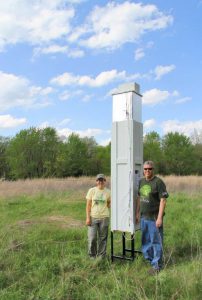 project on chimney swifts. This bird species historically used hollow trees for nesting, constructing a rather haphazard nest out of sticks and saliva. They adapted readily to using the human-made equivalent of a hollow tree … chimneys. As we have progressed to high efficiency furnaces, etc., the construction of traditional brick chimneys (that are not capped) has declined. This in turn has caused a decline in chimney swift populations. One aspect of Maureen’s project is to look at the effectiveness of artificial “chimneys” or towers as an alternate nesting site for this species. Maureen was looking for locations around central Illinois to place her towers where they could, hopefully, be monitored on a regular basis. Upon hearing about the bird monitoring/banding activities here at LLCC, she elected to erect a tower in the prairie between the lake and the softball field. If the nesting tower is used by chimney swifts, Maureen will monitor the nesting activities with an internal camera and possibly attach GPS locators to a bird to monitor the short-term movements of that individual bird.
project on chimney swifts. This bird species historically used hollow trees for nesting, constructing a rather haphazard nest out of sticks and saliva. They adapted readily to using the human-made equivalent of a hollow tree … chimneys. As we have progressed to high efficiency furnaces, etc., the construction of traditional brick chimneys (that are not capped) has declined. This in turn has caused a decline in chimney swift populations. One aspect of Maureen’s project is to look at the effectiveness of artificial “chimneys” or towers as an alternate nesting site for this species. Maureen was looking for locations around central Illinois to place her towers where they could, hopefully, be monitored on a regular basis. Upon hearing about the bird monitoring/banding activities here at LLCC, she elected to erect a tower in the prairie between the lake and the softball field. If the nesting tower is used by chimney swifts, Maureen will monitor the nesting activities with an internal camera and possibly attach GPS locators to a bird to monitor the short-term movements of that individual bird.
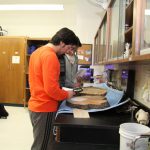
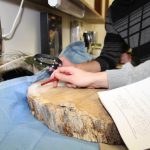
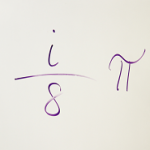
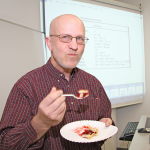
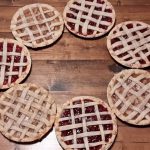
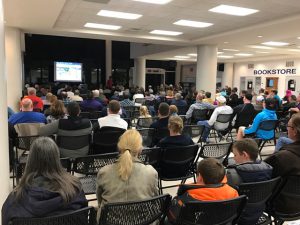 training class hosted by LLCC and the National Weather Service Feb. 27. Thanks to all those at LLCC who helped in some way with the event.
training class hosted by LLCC and the National Weather Service Feb. 27. Thanks to all those at LLCC who helped in some way with the event.